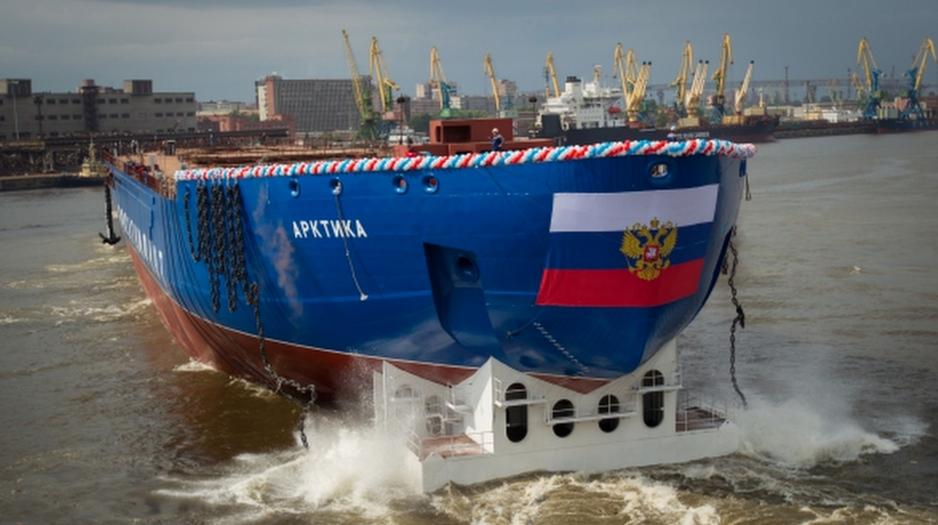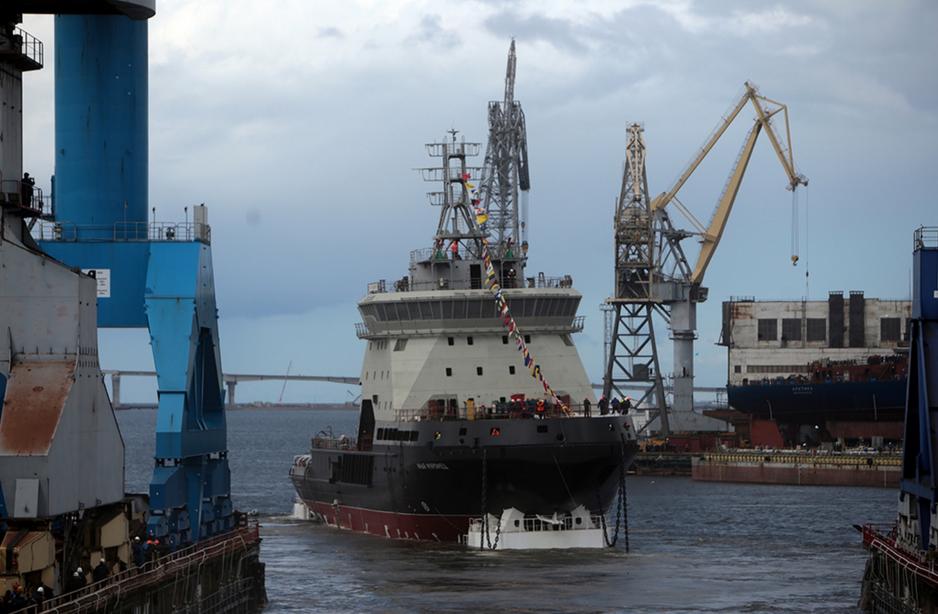New icebreakers further expand Russia’s access to Arctic

Nuclear icebreaker Sibir (Siberia) will be floated out at the Baltic Shipyard in St. Petersburg on September 22. It will become the second vessel of the LK-60Ya class following the launch of Arktika (Arctic) in June 2016. A third icebreaker Ural is expected to follow next year under the contract with FSUE Rosatomflot.
Replacing aging icebreaker capabilities is an integral part to Russia’s plans to further expand access to resources in the Arctic waters along the Northern Sea Route (NSR). While Russia stresses the civilian use of these new assets, experts point out that they are part of a larger system greatly enhancing surveillance of and control over the region.
"It gives them the capability to do what they want and how these assets are used really depends on what the political leaderships wants to do with them. They will have much expanded capability, and the choice how to use them remains with them," states Rob Huebert associate professor at the University of Calgary and a senior research fellow with the Centre for Military and Strategic Studies.
Rush to replace aging nuclear icebreakers
The new icebreaker class, also known as Project 22220, serves as a replacement for the old Arktika-class nuclear icebreakers developed in the 1970s of which six vessels were originally built but only two, Yamal and 50 Let Pobedy (50 Years of Victory), remain in service.
Yamal was launched in 1982 and even with expensive refurbishments in 2014 is slated for decommissioning by 2022. 50 Let Pobedy, originally laid down in 1989, wasn’t completed until 2007 due to a shortage of funds and will be able to operate into the 2030s.
The LK-60Ya will be powered by two RITM-200 reactors, each generating 175MW, making them the world’s largest and most powerful icebreakers. Their primary service area will be the Arctic waters along the NSR as well as in the mouths of the Yenisei River and the Gulf of Ob.
"Icebreakers are fundamentally about access, [...] ensuring that you can have a presence on your territory whenever you need to be there" says Andrew Holland, Director of Studies and Senior Fellow for Energy and Climate at the American Security Project.
"It is part of Russia’s larger expansion of access and capabilities in the region, less a military play than a commercial play. Russia simply has made a strategic decision that they will utilize their Arctic resources."
Improved design to escort cargo ships
Compared to the old Arktika-class icebreakers, the new class’ shallower draft and wider beam makes them more suitable for their primary task of escorting vessels during heavy ice conditions along the route. With a beam at the waterline of 34 meters, compared to 28 meters, they can create wider channels when breaking ice thus escorting larger cargo vessels. Dual-draft capability makes them more suitable for operations in both the Arctic Ocean and shallower river deltas.
Arktika is expected to enter into service in 2019, pushed back from 2017, followed by Sibir in 2020, and Ural in 2021. Total project costs are estimated at 122 billion rubles ($1.9 bn).
New icebreaker for Russia’s Navy
The country’s efforts to replace aging icebreaker capabilities also extends to its armed forces. Russia’s Navy will take receipt of the Ilya Muromets, the first purpose-built icebreaker for the Northern Fleet in 45 years, by the end of 2017. The conventional (non-nuclear) icebreaker will be capable of breaking first and second-year ice up to 1.5 meters thick and will operate along the NSR.
"The Navy icebreaker even though a smaller vessel is highly capable for the ice conditions it will encounter and it is the first that will be integrated into the Navy as a unit," adds Huebert.

Rob Huebert, associate professor at the University of Calgary and a senior research fellow with the Centre for Military and Strategic Studies.


Limited funding for future projects
The prospects of an even larger and more powerful icebreaker, the LK-110Ya or Lider-class, have dimmed significantly, especially in light of this week’s release of the program for social and economic development of the Arctic zone. Under the program the federal government plans to budget a mere $205 million until 2020, with the potential for $2.5 billion for the period from 2021-2025, contingent on Russia’s "financial capabilities," Prime Minister Dmitry Medvedev explained to TASS news agency. Such funds aren’t nearly enough to cover the massive costs, up to $4.2 billion to design, develop and construct three LK-110Ya icebreakers.
"Funding for the larger more powerful icebreakers has been delayed if not deferred indefinitely. There is a huge lack of funds for the Russian Arctic at this moment," says Lawson Brigham Professor of Geography and Arctic Policy at the University of Alaska, Fairbanks.
Russia’s capabilities ahead of other Arctic states
However, even given the uncertainty of Russia’s ability to finance these projects its efforts in the Arctic remain far ahead of developments in other Arctic states.
"Even if it just replacing existing capabilities, they are the only ones doing it. Canada and the US are still figuring out how to do that. The fact that they can replace it and no one else can speaks volume. Is it constabulary, is it for economic reasons, is it to integrate with military capabilities, is it for surveillance, it’s all of the above", concludes Huebert.
